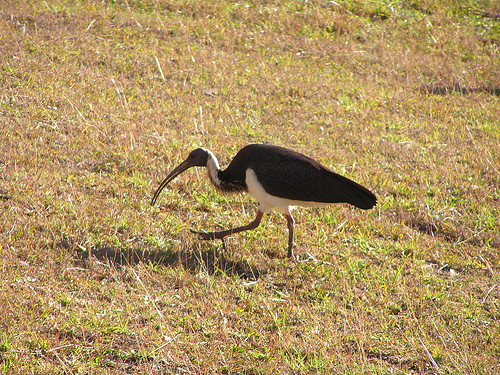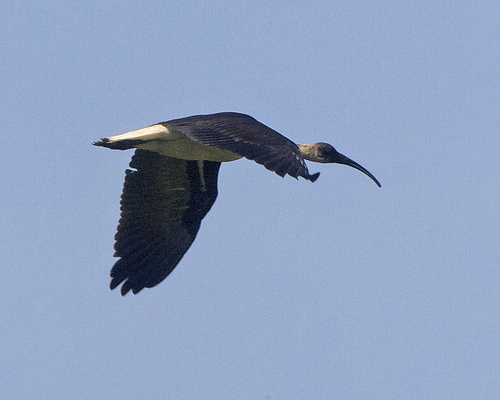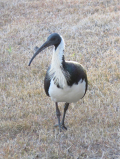Colours
Distinguishing features
They have dark wings that show an iridescent, multicoloured sheen in sunlight, and have a dark back and collar. Most of the neck is white, as are the underparts and undertail. They have a long, black, downcurved bill, and their legs are usually red near the top and dark grey toward the feet. Straw-like feathers on the neck of adults give the bird its common name. (Wikipedia)
Size
- From 65 cm to 70 cm (Length of specimen)
Wingspan
- From 100 cm to 120 cm
Synonyms
Similar taxa
Distribution
Distribution and habitat preferences
They are found throughout Australia, except parts of Western Australia, South Australia, and south-west Tasmania. They are most abundant on the east coast, and also inhabit Norfolk Island and Lord Howe Island. They are also found in Indonesia and New Guinea.[4] Found around shallow freshwater wetlands, cultivated pastures, edges of swamps and lagoons, and wet or dry grasslands. They tend to avoid arid and saltwater areas, and coastal mudflats. They are extremely nomadic, and are constantly on the move searching for suitable habitats. They are frequently seen standing on high branches of bare trees, silhouetted against the sky. (Wikipedia)
Diet
In shallow waters, straw-necked ibises feed on aquatic insects, molluscs, frogs, and food sifted from the surface of the water body. On land, they thrive on grasshoppers, crickets, and locusts. They also eat small lizards, skinks, and other small reptiles. (Wikipedia)





